Be Your Own Explorer ✨the Cosmos Is Waiting...
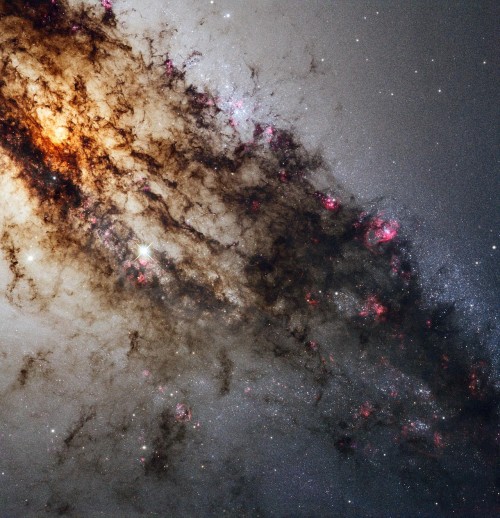
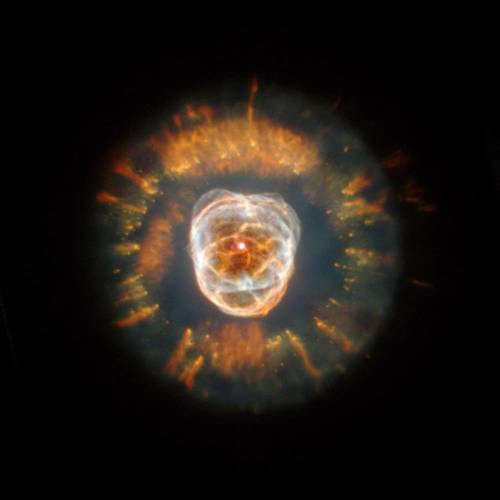
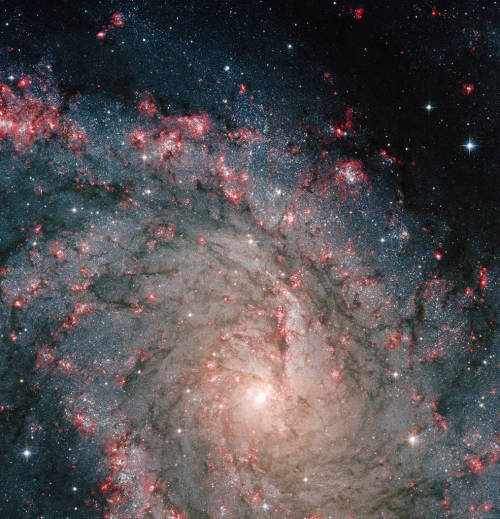
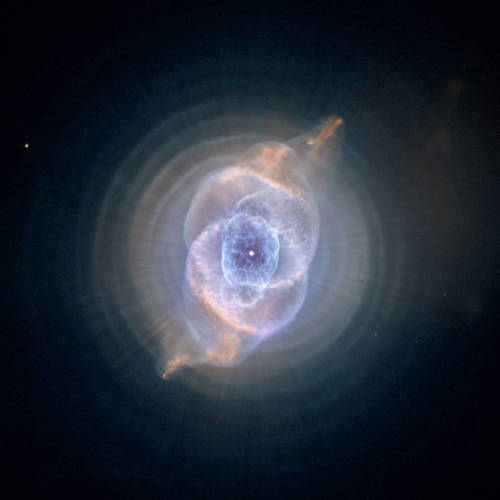
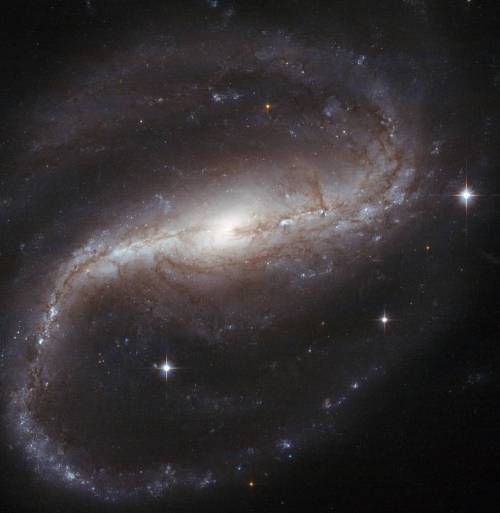
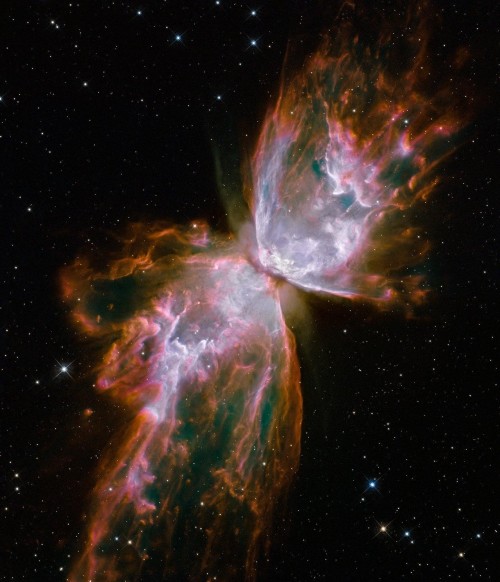

Be your own explorer ✨the cosmos is waiting...
From nearby clouds of gas and dust to remote galaxies that formed billions of years ago, tour the night sky with our Hubble Space Telescope’s new Caldwell catalog. The catalog of star clusters, galaxies and nebulas was first produced to highlight cosmic wonders visible to amateur astronomers. Since then Hubble has taken images of 95 out of the 109 objects, bringing these objects to life in exquisite detail.
While the objects can be observed using modest ground-based telescopes, Hubble’s Caldwell collection has been assembled for astronomers to see the finer details of each object in the night sky.
View the full collection here!
Make sure to follow us on Tumblr for your regular dose of space: http://nasa.tumblr.com.
More Posts from Nasa and Others
What was it like to be in a vessel as it aborted mission? How do you handle a situation like that and continue with future missions?
Be Glad You Don’t Have to Dust in Space!
Throw open the windows and break out the feather duster, because spring is here and it’s time to do a little cleaning! Fortunately, no one has to tidy up the dust in space — because there’s a lot of it — around 100 tons rain down on Earth alone every day! And there’s even more swirling around the solar system, our Milky Way galaxy, other galaxies and the spaces in between.

By studying the contents of the dust in your house — which can include skin cells, pet fur, furniture fibers, pollen, concrete particles and more — scientists learn a lot about your environment. In the same way, scientists can learn a lot by looking at space dust. Also called cosmic dust, a fleck of space dust is usually smaller than a grain of sand and is made of rock, ice, minerals or organic compounds. Scientists can study cosmic dust to learn about how it formed and how the universe recycles material.

“We are made of star-stuff,” Carl Sagan famously said. And it’s true! When a star dies, it sheds clouds of gas in strong stellar winds or in an explosion called a supernova. As the gas cools, minerals condense. Recent observations by our SOFIA mission suggest that in the wake of a supernova shockwave, dust may form more rapidly than scientists previously thought. These clouds of gas and dust created by the deaths of stars can sprawl across light-years and form new stars — like the Horsehead Nebula pictured above. Disks of dust and gas form around new stars and produce planets, moons, asteroids and comets. Here on Earth, some of that space dust eventually became included in living organisms — like us! Billions of years from now, our Sun will die too. The gas and dust it sheds will be recycled into new stars and planets and so on and so forth, in perpetuity!

Astronomers originally thought dust was a nuisance that got in the way of seeing the objects it surrounded. Dust scatters and absorbs light from stars and emits heat as infrared light. Once we started using infrared telescopes, we began to understand just how important dust is in the universe and how beautiful it can be. The picture of the Andromeda galaxy above was taken in the infrared by our Spitzer Space Telescope and reveals detailed spirals of dust that we can’t see in an optical image.

We also see plenty of dust right here in our solar system. Saturn’s rings are made of mostly ice particles and some dust, but scientists think that dust from meteorites may be darkening the rings over time. Jupiter also has faint dusty rings, although they’re hard to see — Voyager 1 only discovered them when it saw them backlit by the Sun. Astronomers think the rings formed when meteorite impacts on Jupiter’s moons released dust into orbit. The Juno spacecraft took the above picture in 2016 from inside the rings, looking out at the bright star Betelgeuse.

Copyright Josh Calcino, used with permission
And some space dust you can see from right here on Earth! In spring or autumn, right before sunrise or after sunset, you may be able to catch a glimpse of a hazy cone of light above the horizon created when the Sun’s rays are scattered by dust in the inner solar system. You can see an example in the image above, extending from above the tree on the horizon toward a spectacular view of the Milky Way. This phenomenon is called zodiacal light — and the dust that’s reflecting the sunlight probably comes from icy comets. Those comets were created by the same dusty disk that that formed our planets and eventually you and the dust under your couch!
Make sure to follow us on Tumblr for your regular dose of space: http://nasa.tumblr.com
What’s That in the Night Sky?
The night sky has really been showing off lately. During the past week, we’ve had the chance to see some amazing sights by simply just looking up!
On Wednesday, Dec. 29, we were greeted by a flyby of the International Space Station over much of the east coast.
When the space station flies overhead, it’s usually easy to spot because it’s the third brightest object in the night sky. You can even enter your location into THIS website and get a list of dates/times when it will be flying over you!
One of our NASA Headquarters Photographers ventured to the Washington National Cathedral to capture the pass in action.

Then, on Saturday, Dec. 2, just one day before the peak of this month’s supermoon, the space station was seen passing in front of the Moon.
Captured by another NASA HQ Photographer, this composite image shows the space station, with a crew of six onboard, as its silhouette transits the Moon at roughly five miles per second.

Here’s an animated version of the transit.

To top off all of this night sky greatness, are these beautiful images of the Dec. 3 supermoon. This marked the first of three consecutive supermoons taking the celestial stage. The two others will occur on Jan. 1 and Jan. 31, 2018.

A supermoon occurs when the moon’s orbit is closest to Earth at the same time that it is full.

Are you this pilot? An aircraft taking off from Ronald Reagan National Airport is seen passing in front of the Moon as it rose on Sunday.
Learn more about the upcoming supermoons:
To learn more about what you can expect to spot in the sky this month, visit: https://solarsystem.nasa.gov/news/2017/12/04/whats-up-december-2017
Discover when the International Space Station will be visible over your area by visiting: https://spotthestation.nasa.gov/
Learn more about our Moon at: https://moon.nasa.gov/
Make sure to follow us on Tumblr for your regular dose of space: http://nasa.tumblr.com.
Stars Make Firework Supplies!
The next time you see fireworks, take a moment to celebrate the cosmic pyrotechnics that made them possible. From the oxygen and potassium that help fireworks burn to the aluminum that makes sparklers sparkle, most of the elements in the universe wouldn’t be here without stars.
From the time the universe was only a few minutes old until it was about 400 million years old, the cosmos was made of just hydrogen, helium and a teensy bit of lithium. It took some stellar activity to produce the rest of the elements!

Stars are element factories
Even after more than 13 billion years, the hydrogen and helium that formed soon after the big bang still make up over 90 percent of the atoms in the cosmos. Most of the other elements come from stars.

Stars began popping into the universe about 400 million years after the big bang. That sounds like a long time, but it’s only about 3% of the universe’s current age!
Our Nancy Grace Roman Space Telescope will study the universe’s early days to help us learn more about how we went from a hot, soupy sea of atoms to the bigger cosmic structures we see today. We know hydrogen and helium atoms gravitated together to form stars, where atoms could fuse together to make new elements, but we're not sure when it began happening. Roman will help us find out.

The central parts of atoms, called nuclei, are super antisocial – it takes a lot of heat and pressure to force them close together. Strong gravity in the fiery cores of the first stars provided just the right conditions for hydrogen and helium atoms to combine to form more elements and generate energy. The same process continues today in stars like our Sun and provides some special firework supplies.
Carbon makes fireworks explode, helps launch them into the sky, and is even an ingredient in the “black snakes” that seem to grow out of tiny pellets. Fireworks glow pink with help from the element lithium. Both of these elements are created by average, Sun-like stars as they cycle from normal stars to red giants to white dwarfs.
Eventually stars release their elements into the cosmos, where they can be recycled into later generations of stars and planets. Sometimes they encounter cosmic rays, which are nuclei that have been boosted to high speed by the most energetic events in the universe. When cosmic rays collide with atoms, the impact can break them apart, forming simpler elements. That’s how we get boron, which can make fireworks green, and beryllium, which can make them silver or white!

Since massive stars have even stronger gravity in their cores, they can fuse more elements – all the way up to iron. (The process stops there because instead of producing energy, fusing iron is so hard to do that it uses up energy.)
That means the sodium that makes fireworks yellow, the aluminum that produces silver sparks (like in sparklers), and even the oxygen that helps fireworks ignite were all first made in stars, too! A lot of these more complex elements that we take for granted are actually pretty rare throughout the cosmos, adding up to less than 10 percent of the atoms in the universe combined!
Fusion in stars only got us through iron on the periodic table, so where do the rest of our elements come from? It’s what happens next in massive stars that produces some of the even more exotic elements.

Dying stars make elements too!
Once a star many times the Sun’s mass burns through its fuel, gravity is no longer held in check, and its core collapses under its own weight. There, atoms are crushed extremely close together – and they don’t like that! Eventually it reaches a breaking point and the star explodes as a brilliant supernova. Talk about fireworks! These exploding stars make elements like copper, which makes fireworks blue, and zinc, which creates a smoky effect.
Something similar can happen when a white dwarf star – the small, dense core left behind after a Sun-like star runs out of fuel – steals material from a neighboring star. These white dwarfs can explode as supernovae too, spewing elements like the calcium that makes fireworks orange into the cosmos.

When stars collide
White dwarfs aren’t the only “dead” stars that can shower their surroundings with new elements. Stars that are too massive to leave behind white dwarfs but not massive enough to create black holes end up as neutron stars.
If two of these extremely dense stellar skeletons collide, they can produce all kinds of elements, including the barium that makes fireworks bright green and the antimony that creates a glitter effect. Reading this on a phone or computer? You can thank crashing dead stars for some of the metals that make up your device, too!

As for most of the remaining elements we know of, we've only seen them in labs on Earth so far.
Sounds like we’ve got it all figured out, right? But there are still lots of open questions. Our Roman Space Telescope will help us learn more about how elements were created and distributed throughout galaxies. That’s important because the right materials had to come together to form the air we breathe, our bodies, the planet we live on, and yes – even fireworks!
So when you’re watching fireworks, think about their cosmic origins!
Learn more about the Roman Space Telescope at: https://roman.gsfc.nasa.gov/
Make sure to follow us on Tumblr for your regular dose of space: http://nasa.tumblr.com
10 Things: Journey to the Center of Mars
May the fifth be with you because history is about to be made: As early as May 5, 2018, we’re set to launch Mars InSight, the very first mission to study the deep interior of Mars. We’ve been roaming the surface of Mars for a while now, but when InSight lands on Nov. 26, 2018, we’re going in for a deeper look. Below, 10 things to know as we head to the heart of Mars.

Coverage of prelaunch and launch activities begins Thursday, May 3, on NASA Television and our homepage.
1. What’s in a name?

"Insight" is to see the inner nature of something, and the InSight lander—a.k.a. Interior Exploration using Seismic Investigations, Geodesy and Heat Transport—will do just that. InSight will take the "vital signs" of Mars: its pulse (seismology), temperature (heat flow) and reflexes (radio science). It will be the first thorough check-up since the planet formed 4.5 billion years ago.
2. Marsquakes.
You read that right: earthquakes, except on Mars. Scientists have seen a lot of evidence suggesting Mars has quakes, and InSight will try to detect marsquakes for the first time. By studying how seismic waves pass through the different layers of the planet (the crust, mantle and core), scientists can deduce the depths of these layers and what they're made of. In this way, seismology is like taking an X-ray of the interior of Mars.
Want to know more? Check out this one-minute video.
3. More than Mars.

InSight is a Mars mission, but it’s also so much more than that. By studying the deep interior of Mars, we hope to learn how other rocky planets form. Earth and Mars were molded from the same primordial stuff more than 4.5 billion years ago, but then became quite different. Why didn’t they share the same fate? When it comes to rocky planets, we’ve only studied one in great detail: Earth. By comparing Earth's interior to that of Mars, InSight's team hopes to better understand our solar system. What they learn might even aid the search for Earth-like planets outside our solar system, narrowing down which ones might be able to support life.
4. Robot testing.
InSight looks a bit like an oversized crane game: When it lands on Mars this November, its robotic arm will be used to grasp and move objects on another planet for the first time. And like any crane game, practice makes it easier to capture the prize.
Want to see what a Mars robot test lab is like? Take a 360 tour.
5. The gang’s all here.

InSight will be traveling with a number of instruments, from cameras and antennas to the heat flow probe. Get up close and personal with each one in our instrument profiles.
6. Trifecta.

InSight has three major parts that make up the spacecraft: Cruise Stage; Entry, Descent, and Landing System; and the Lander. Find out what each one does here.
7. Solar wings.
Mars has weak sunlight because of its long distance from the Sun and a dusty, thin atmosphere. So InSight’s fan-like solar panels were specially designed to power InSight in this environment for at least one Martian year, or two Earth years.
8. Clues in the crust.

Our scientists have found evidence that Mars’ crust is not as dense as previously thought, a clue that could help researchers better understand the Red Planet’s interior structure and evolution. “The crust is the end-result of everything that happened during a planet’s history, so a lower density could have important implications about Mars’ formation and evolution,” said Sander Goossens of our Goddard Space Flight Center in Greenbelt, Maryland.
9. Passengers.

InSight won’t be flying solo—it will have two microchips on board inscribed with more than 2.4 million names submitted by the public. "It's a fun way for the public to feel personally invested in the mission," said Bruce Banerdt of our Jet Propulsion Laboratory, the mission's principal investigator. "We're happy to have them along for the ride."
10. Tiny CubeSats, huge firsts.

The rocket that will loft InSight beyond Earth will also launch a separate NASA technology experiment: two mini-spacecraft called Mars Cube One, or MarCO. These suitcase-sized CubeSats will fly on their own path to Mars behindInSight. Their goal is to test new miniaturized deep space communication equipment and, if the MarCOs make it to Mars, may relay back InSight data as it enters the Martian atmosphere and lands. This will be a first test of miniaturized CubeSat technology at another planet, which researchers hope can offer new capabilities to future missions.
Check out the full version of ‘Solar System: 10 Thing to Know This Week’ HERE.
Make sure to follow us on Tumblr for your regular dose of space: http://nasa.tumblr.com.
What specific area of space research most excites you? Could be something being explored currently, or something you would like to see work done on in the future.
My twin sister worked on genetics in graduate school, and she continues to research ideas in genetics. She comes up with a lot of great ideas for what we can study in space, especially now since genetics is a focus on the space station. I’m looking forward to continuing with the genetics experiments and seeing what we learn.

Say hello to the Butterfly Nebula 👋
It looks like our Hubble Space Telescope captured an image of a peaceful, cosmic butterfly unfurling its celestial wings, but the truth is vastly more violent. In the Butterfly Nebula, layers of gas are being ejected from a dying star. Medium-mass stars grow unstable as they run out of fuel, which leads them to blast tons of material out into space at speeds of over a million miles per hour!
Streams of intense ultraviolet radiation cause the cast-off material to glow, but eventually the nebula will fade and leave behind only a small stellar corpse called a white dwarf. Our middle-aged Sun can expect a similar fate once it runs out of fuel in about six billion years.
Planetary nebulas like this one aren’t actually related to planets; the term was coined by astronomer William Herschel, who actually discovered the Butterfly Nebula in 1826. Through his small telescope, planetary nebulas looked like glowing, planet-like orbs. While stars that generate planetary nebulas may have once had planets orbiting them, scientists expect that the fiery death throes these stars undergo will ultimately leave any planets in their vicinity completely uninhabitable.
Make sure to follow us on Tumblr for your regular dose of space: http://nasa.tumblr.com.
13 Reasons to Have an Out-of-This-World Friday (the 13th)
1. Not all of humanity is bound to the ground

Since 2000, the International Space Station has been continuously occupied by humans. There, crew members live and work while conducting important research that benefits life on Earth and will even help us eventually travel to deep space destinations, like Mars.
2. We’re working to develop quieter supersonic aircraft that would allow you to travel from New York to Los Angeles in 2 hours

We are working hard to make flight greener, safer and quieter – all while developing aircraft that travel faster, and building an aviation system that operates more efficiently. Seventy years after Chuck Yeager broke the sound barrier in the Bell X-1 aircraft, we’re continuing that supersonic X-plane legacy by working to create a quieter supersonic jet with an aim toward passenger flight.
3. The spacecraft, rockets and systems developed to send astronauts to low-Earth orbit as part of our Commercial Crew Program is also helping us get to Mars
Changes to the human body during long-duration spaceflight are significant challenges to solve ahead of a mission to Mars and back. The space station allows us to perform long duration missions without leaving Earth’s orbit.

Although they are orbiting Earth, space station astronauts spend months at a time in near-zero gravity, which allows scientists to study several physiological changes and test potential solutions. The more time they spend in space, the more helpful the station crew members can be to those on Earth assembling the plans to go to Mars.
4. We’re launching a spacecraft in 2018 that will go “touch the Sun”

In the summer of 2018, we’re launching Parker Solar Probe, a spacecraft that will get closer to the Sun than any other in human history. Parker Solar Probe will fly directly through the Sun’s atmosphere, called the corona. Getting better measurements of this region is key to understanding our Sun.
For instance, the Sun releases a constant outflow of solar material, called the solar wind. We think the corona is where this solar wind is accelerated out into the solar system, and Parker Solar Probe’s measurements should help us pinpoint how that happens.
5. You can digitally fly along with spacecraft…that are actually in space…in real-time!

NASA’s Eyes are immersive, 3D simulations of real events, spacecraft locations and trajectories. Through this interactive app, you can experience Earth and our solar system, the universe and the spacecraft exploring them. Want to watch as our Juno spacecraft makes its next orbit around Juno? You can! Or relive all of the Voyager mission highlights in real-time? You can do that too! Download the free app HERE to start exploring.
6. When you feel far away from home, you can think of the New Horizons spacecraft as it heads toward the Kuiper Belt, and the Voyager spacecraft are beyond the influence of our sun…billions of miles away

Our New Horizons spacecraft completed its Pluto flyby in July 2015 and has continued on its way toward the Kuiper Belt. The spacecraft continues to send back important data as it travels toward deeper space at more than 32,000 miles per hour, and is ~3.2 billion miles from Earth.

In addition to New Horizons, our twin Voyager 1 and 2 spacecraft are exploring where nothing from Earth has flown before. Continuing on their more-than-37-year journey since their 1977 launches, they are each much farther away from Earth and the sun than Pluto. In August 2012, Voyager 1 made the historic entry into interstellar space, the region between the stars, filled with material ejected by the death of nearby stars millions of years ago.
7. There are humans brave enough to not only travel in space, but venture outside space station to perform important repairs and updates during spacewalks

Just this month (October 2017) we’ve already had two spacewalks on the International Space Station...with another scheduled on Oct. 20.
Spacewalks are important events where crew members repair, maintain and upgrade parts of the International Space Station. These activities can also be referred to as EVAs – Extravehicular Activities. Not only do spacewalks require an enormous amount of work to prepare for, but they are physically demanding on the astronauts. They are working in the vacuum of space in only their spacewalking suit.
8. Smart people are up all night working in control rooms all over NASA to ensure that data keeps flowing from our satellites and spacecraft

Our satellites and spacecraft help scientists study Earth and space. Missions looking toward Earth provide information about clouds, oceans, land and ice. They also measure gases in the atmosphere, such as ozone and carbon dioxide and the amount of energy that Earth absorbs and emits. And satellites monitor wildfires, volcanoes and their smoke.
9. A lot of NASA-developed tech has been transferred for use to the public
Our Technology Transfer Program highlights technologies that were originally designed for our mission needs, but have since been introduced to the public market. HERE are a few spinoff technologies that you might not know about.
10. We have a spacecraft currently traveling to an asteroid to collect a sample and bring it back to Earth

OSIRIS-REx is our first-ever mission that will travel to an asteroid and bring a sample of it back to Earth. Currently, the spacecraft is on its way to asteroid Bennu where it will survey and map the object before it “high-fives” the asteroid with its robotic arm to collect a sample, which it will send to Earth.
If everything goes according to plan, on Sept. 24, 2023, the capsule containing the asteroid sample will make a soft landing in the Utah desert.
11. There are Earth-sized planets outside our solar system that may be habitable
To date, we have confirmed 3,000+ exoplanets, which are planets outside our solar system that orbit a Sun-like star. Of these 3,000, some are in the habitable zone – where the temperature is just right for liquid water to exist on the surface.

Recently, our Spitzer Space Telescope revealed the first known system of SEVEN Earth-size planets around a single star. Three of these plants are firmly in the habitable zone, and could have liquid water on the surface, which is key to life as we know it.
12. Earth looks like art from space

In 1960, the United States put its first Earth-observing environmental satellite into orbit around the planet. Over the decades, these satellites have provided invaluable information, and the vantage point of space has provided new perspectives on Earth.

The beauty of Earth is clear, and the artistry ranges from the surreal to the sublime.
13. We’re building a telescope that will be able to see the first stars ever formed in the universe

Wouldn’t it be neat to see a period of the universe’s history that we’ve never seen before? That’s exactly what the James Webb Space Telescope (JWST) will be able to do…plus more!
Specifically, Webb will see the first objects that formed as the universe cooled down after the Big Bang. We don’t know exactly when the universe made the first stars and galaxies – or how for that matter. That is what we are building Webb to help answer.
Happy Friday the 13th! We hope it’s out-of-this-world!
Make sure to follow us on Tumblr for your regular dose of space: http://nasa.tumblr.com.
Meet America’s #NewAstronauts
We’re so excited to introduce America’s new astronauts! After evaluating a record number of applications, we’re proud to present our 2017 astronaut class!

These 12 new astronaut candidates were chosen from more than 18,300 people who submitted applications from December 2015 to February 2016. This was more than double the previous record of 8,000 set in 1978.

Meet them…
Kayla Barron

This Washington native graduated from the U.S. Naval Academy with a Bachelor’s degree in Systems Engineering. A Gates Cambridge Scholar, Barron earned a Master’s degree in Nuclear Engineering from the University of Cambridge.
She enjoys hiking, backpacking, running and reading.
Zena Cardman

Zena is a native of Virginia and completed a Bachelor of Science degree in Biology and Master of Science degree in Marine Sciences at The University of North Carolina, Chapel Hill. Her research has focused on microorganisms in subsurface environments, ranging from caves to deep sea sediments.
In her free time, she enjoys canoeing, caving, raising backyard chickens and glider flying.
Raja Chari

Raja is an Iowa native and graduated from the U.S. Air Force Academy in 1999 with Bachelor’s degrees in Astronautical Engineering and Engineering Science. He continued on to earn a Master’s degree in Aeronautics and Astronautics from Massachusetts Institute of Technology and graduated from the U.S. Naval Test Pilot School.
He has accumulated more than 2,000 hours of flight time in the F-35, F-15, F-16 and F-18 including F-15E combat missions in Operation Iraqi Freedom.
Matthew Dominick

This Colorado native earned a Bachelor of Science in Electrical Engineering from the University of San Diego and a Master of Science degree in Systems Engineering from the Naval Postgraduate School. He graduated from U.S. Naval Test Pilot School.
He has more than 1,600 hours of flight time in 28 aircraft, 400 carrier-arrested landigns and 61 combat missions.
Bob Hines

Bob is a Pennsylvania native and earned a Bachelor’s degree in Aerospace Engineering from Boston University. He is a graduate of the U.S. Air Force Test Pilot School, where he earned a Master’s degree in Flight Test Engineering. He continued on to earn a Master’s degree in Aerospace Engineering from the University of Alabama.
During the last five years, he has served as a research pilot at NASA’s Johnson Space Center.
Warren Hoburg

Nicknamed “Woody”, this Pennsylvania native earned a Bachelor’s degree in Aeronautics and Astronautics from the Massachusetts Institute of Technology (MIT) and a Doctorate in Electrical Engineering and Computer Science from the University of California, Berkley.
He is an avid rock climber, moutaineer and pilot.
Jonny Kim

This California native trained and operated as a Navy SEAL, completing more than 100 combat operations and earning a Silver Star and Bronze Star with Combat “V”. Afterward, he went on to complete a degree in Mathematics at the University of San Diego and a Doctorate of Medicine at Harvard Medical School.
His interests include spending time with his family, volunteering with non-profit vertern organizations, academic mentoring, working out and learning new skills.
Robb Kulin

Robb is an Alaska native and earned a Bachelor’s degree in Mechanical Engineering from the University of Denver, before going on to complete a Master’s degree in Materials Science and a Doctorate in Engineering at the University of California, San Diego.
He is a private pilot and also enjoys playing piano, photography, packrafting, running, cycling, backcountry skiing and SCUBA diving.
Jasmin Moghbeli

This New York native earned a Bachlor’s degree in Aerospace Engineering with Information Technology at the Massachusetts Institute of Technology, followed by a Master’s degree in Aerospace Engineering from the Naval Postgraduate School.
She is also a distinguished graduate of the U.S. Naval Test Pilot School and has accumulated mofre than 1,600 hours of flight time and 150 combat missions.
Loral O’Hara

This Texas native earned a Bachelor of Science degree in Aerospace Engineering at the University of Kansas and a Master of Science degree in Aeronautics and Astronautics from Purdue University.
In her free time, she enjoys working in the garage, traveling, surfing, diving, flying, sailing, skiing, hiking/orienteering, caving, reading and painting.
Frank Rubio

Frank is a Florida native and graduated from the U.S. Military Academy and earned a Doctorate of Medicine from the Uniformed Services University of the Health Sciences.
He is a board certified family physician and flight surgeon. At the time of his selection, he was serving in the 10th Special Forces Group (Airborne).
Jessica Watkins

This Colorado native earned a Bachelor’s degree in Geological and Environmental Sciences at Stanford University, and a Doctorate in Geology from the University of California, Los Angeles (UCLA).
She enjoys soccer, rock climbing, skiing and creative writing.

After completing two years of training, the new astronaut candidates could be assigned to missions performing research on the International Space Station, launching from American soil on spacecraft built by commercial companies, and launching on deep space missions on our new Orion spacecraft and Space Launch System rocket.
Make sure to follow us on Tumblr for your regular dose of space: http://nasa.tumblr.com
Solar System: OSIRIS-REx and Bennu
Let us lead you on a journey of our solar system. Here are some things to know this week.
This week, we’re setting out on an ambitious quest: our first mission to retrieve a sample from an asteroid and return it to the Earth.
1. Take It from the Beginning

Some asteroids are time capsules from the very beginnings of our solar system. Some meteorites that fall to Earth originate from asteroids. Laboratory tests of materials found in meteorites date to before the sun started shining. OSIRIS-REx's destination, the near-Earth asteroid Bennu, intrigues scientists in part because it is thought to be composed of the primitive building blocks of the solar system.
Meet asteroid Bennu
Take a tour of asteroids in our solar system.
2. Creating the Right Ship for the Journey

At the heart of the OSIRIS-REx mission is the robotic spacecraft that will fly to Bennu, acting as the surrogate eyes and hands of researchers on Earth. With its solar panels deployed, the craft is about 20 feet (6 meters) long and 10 feet (3 meters) high. Packed into that space are the sample retrieval system, the capsule for returning the sample to the ground on Earth, plus all the hardware for navigation and communicating with home.
Explore the instruments and how they work
3. School of Hard Rocks

If you're a teacher or a student, the OSIRIS-REx mission and exploring asteroids make for some engaging lesson material. Here are some of the things you can try.
Find dozens of lesson plans
4. Standing (or Flying) on the Shoulders of Giants

OSIRIS-REx is not the first time we have explored an asteroid. Several robotic spacecraft led the way, such as the NEAR Shoemaker probe that orbited, and even landed on, the asteroid Eros.
Meet the asteroid pioneers and see what they discovered
5. The Probability of Successfully Navigating an Asteroid Field is...Pretty High

How much of what we see in movies about asteroids is fact, and how much is fiction? This video lays out the basics. (Spoiler alert: even though there are millions of them, the average distance between asteroids in the main belt is something like 1.8 million miles, or about three million kilometers.)
+ Watch + See more videos that explain asteroids and the mission
Discover the full list of 10 things to know about our solar system this week HERE.
Make sure to follow us on Tumblr for your regular dose of space: http://nasa.tumblr.com
-
 chalkadow liked this · 2 weeks ago
chalkadow liked this · 2 weeks ago -
 thenerdyrehelps liked this · 4 months ago
thenerdyrehelps liked this · 4 months ago -
 bluenightscloud liked this · 1 year ago
bluenightscloud liked this · 1 year ago -
 nojkno liked this · 1 year ago
nojkno liked this · 1 year ago -
 inatuapvemar liked this · 1 year ago
inatuapvemar liked this · 1 year ago -
 dofitabathsrous liked this · 1 year ago
dofitabathsrous liked this · 1 year ago -
 protinrole liked this · 1 year ago
protinrole liked this · 1 year ago -
 dalegada liked this · 1 year ago
dalegada liked this · 1 year ago -
 schocutosun liked this · 1 year ago
schocutosun liked this · 1 year ago -
 ethmatisur liked this · 1 year ago
ethmatisur liked this · 1 year ago -
 liferockingitout reblogged this · 1 year ago
liferockingitout reblogged this · 1 year ago -
 storybunnynumber1 reblogged this · 1 year ago
storybunnynumber1 reblogged this · 1 year ago -
 lobohuntsrelentlessly liked this · 1 year ago
lobohuntsrelentlessly liked this · 1 year ago -
 remember1me liked this · 2 years ago
remember1me liked this · 2 years ago -
 jamestheratchet liked this · 2 years ago
jamestheratchet liked this · 2 years ago -
 multifandomqueen199032 liked this · 2 years ago
multifandomqueen199032 liked this · 2 years ago -
 lola1695 liked this · 2 years ago
lola1695 liked this · 2 years ago
Explore the universe and discover our home planet with the official NASA Tumblr account
1K posts